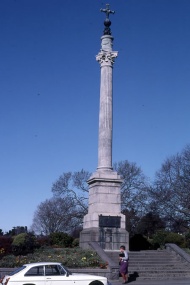Articles
State housing

New Zealand's first state house was formally opened on 18 September 1937. But the government has provided rental housing for New Zealanders for more than a century. Explore the history of this country's various state housing schemes and their contribution to the New Zealand way of life.
- Page 7 - State house styleThe design of state houses has been fodder for armchair and professional critics since the beginning. Detractors slagged the first workers' dwellings for being 'too swell' and
Related keywords
- shipping
- historic places
- railways
- temuka
- transport
- public works
- thomas david burnett
- water supply
- horses
- phar lap
- jack lovelock
- roadside stories
- bob fitzsimmons
- richard pearse
- shipwrecks
- church
- window
- waimataitai
- anniversaries
- south african war
- boer war
- queen elizabeth
- railway stations
- royal tours
- housing
- state housing
- architecture
- maori housing
- porirua
- holidays
- public holidays
- christmas
- caroline bay
South Canterbury’s largest centre of population, and only city. The town developed at the only sheltered point on the coast between Banks Peninsula and North Otago, and owes much of its prosperity to its artificial harbour, first developed in the late 1800s. Timaru became an industrial centre processing products from South Canterbury farms. Relatively slow growth since the 1950s means the town has, like nearby Temuka, a well-preserved early 20th-century main street and other notable historic buildings.
















